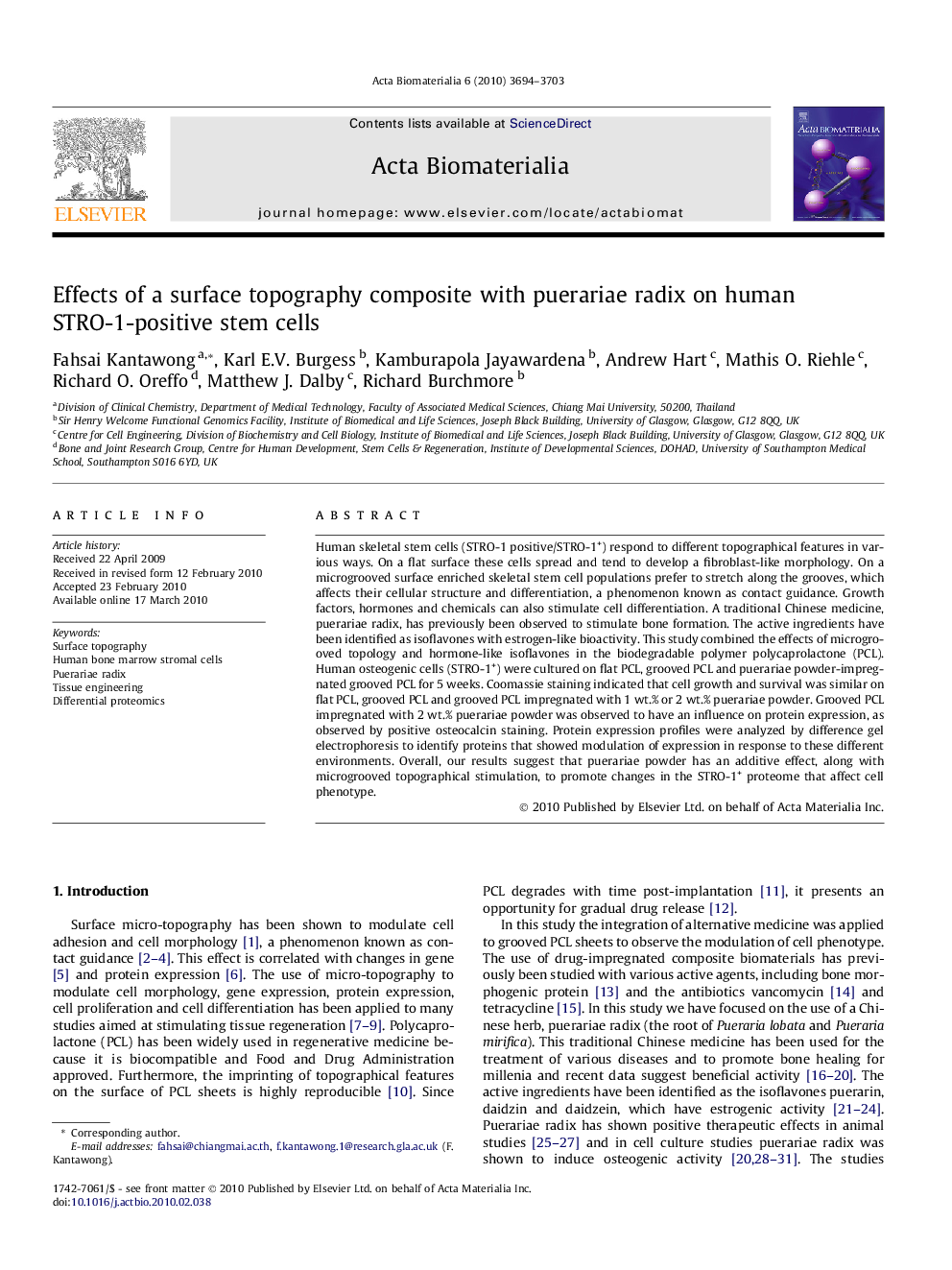| Article ID | Journal | Published Year | Pages | File Type |
|---|---|---|---|---|
| 2165 | Acta Biomaterialia | 2010 | 10 Pages |
Human skeletal stem cells (STRO-1 positive/STRO-1+) respond to different topographical features in various ways. On a flat surface these cells spread and tend to develop a fibroblast-like morphology. On a microgrooved surface enriched skeletal stem cell populations prefer to stretch along the grooves, which affects their cellular structure and differentiation, a phenomenon known as contact guidance. Growth factors, hormones and chemicals can also stimulate cell differentiation. A traditional Chinese medicine, puerariae radix, has previously been observed to stimulate bone formation. The active ingredients have been identified as isoflavones with estrogen-like bioactivity. This study combined the effects of microgrooved topology and hormone-like isoflavones in the biodegradable polymer polycaprolactone (PCL). Human osteogenic cells (STRO-1+) were cultured on flat PCL, grooved PCL and puerariae powder-impregnated grooved PCL for 5 weeks. Coomassie staining indicated that cell growth and survival was similar on flat PCL, grooved PCL and grooved PCL impregnated with 1 wt.% or 2 wt.% puerariae powder. Grooved PCL impregnated with 2 wt.% puerariae powder was observed to have an influence on protein expression, as observed by positive osteocalcin staining. Protein expression profiles were analyzed by difference gel electrophoresis to identify proteins that showed modulation of expression in response to these different environments. Overall, our results suggest that puerariae powder has an additive effect, along with microgrooved topographical stimulation, to promote changes in the STRO-1+ proteome that affect cell phenotype.
